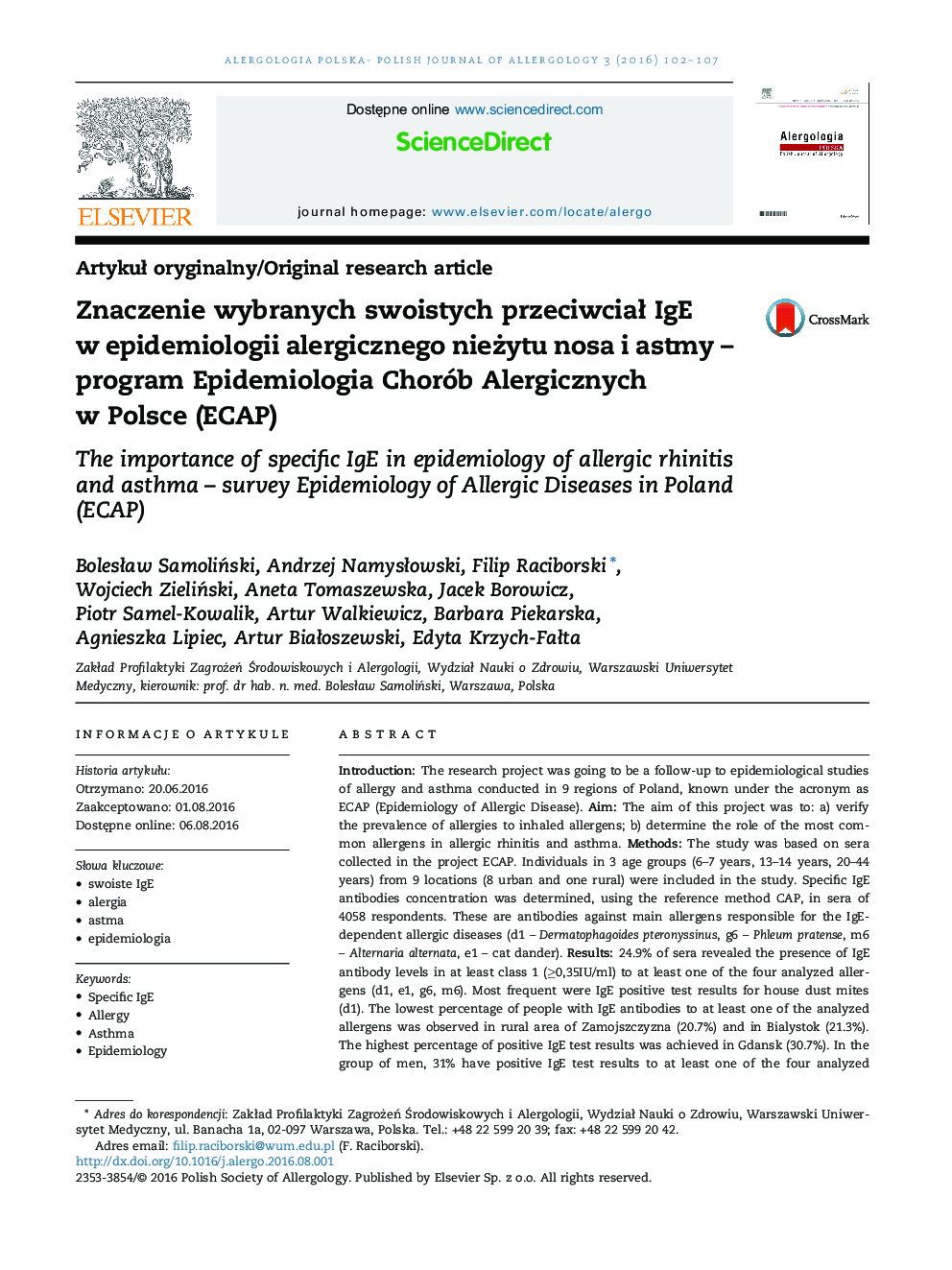| کد مقاله | کد نشریه | سال انتشار | مقاله انگلیسی | نسخه تمام متن |
|---|---|---|---|---|
| 5644452 | 1586543 | 2016 | 6 صفحه PDF | دانلود رایگان |

IntroductionThe research project was going to be a follow-up to epidemiological studies of allergy and asthma conducted in 9 regions of Poland, known under the acronym as ECAP (Epidemiology of Allergic Disease).AimThe aim of this project was to: a) verify the prevalence of allergies to inhaled allergens; b) determine the role of the most common allergens in allergic rhinitis and asthma.MethodsThe study was based on sera collected in the project ECAP. Individuals in 3 age groups (6-7 years, 13-14 years, 20-44 years) from 9 locations (8 urban and one rural) were included in the study. Specific IgE antibodies concentration was determined, using the reference method CAP, in sera of 4058 respondents. These are antibodies against main allergens responsible for the IgE-dependent allergic diseases (d1 - Dermatophagoides pteronyssinus, g6 - Phleum pratense, m6 - Alternaria alternata, e1 - cat dander).Results24.9% of sera revealed the presence of IgE antibody levels in at least class 1 (â¥0,35IU/ml) to at least one of the four analyzed allergens (d1, e1, g6, m6). Most frequent were IgE positive test results for house dust mites (d1). The lowest percentage of people with IgE antibodies to at least one of the analyzed allergens was observed in rural area of Zamojszczyzna (20.7%) and in Bialystok (21.3%). The highest percentage of positive IgE test results was achieved in Gdansk (30.7%). In the group of men, 31% have positive IgE test results to at least one of the four analyzed allergens. For women, it was 19.9%. Most frequent IgE antibodies to at least one of the analyzed allergens were observed in the group of 20-24 year old (31.9%). Similar results were obtained in the group of 13-14 years old (29.2%) and 25-29 years old (27.5%). Least frequent IgE antibodies were observed among persons aged 40-44 (17.4%). In the case of positive result of skin prick test (â¥9 mm) percentage of subjects with IgE antibodies oscillated from 77.8% to 96.3% depending on the allergen. In the group without asthma, IgE antibody to any analyzed allergen was found in 22.2% of cases. Among those diagnosed with asthma, it was 51.3%. In the group without allergic rhinitis, positive IgE test results for at least one of the tested allergens was obtained in 10.9% of cases. In the group with any form of AR, the percentage was 60.1%.ConclusionIn the study group most frequently found positive signs of IgE in the order for house dust mite, grass pollen, cat and mold. The effect of test allergens plays an important role in the pathogenesis of AR and asthma.
Journal: Alergologia Polska - Polish Journal of Allergology - Volume 3, Issue 3, JulyâSeptember 2016, Pages 102-107